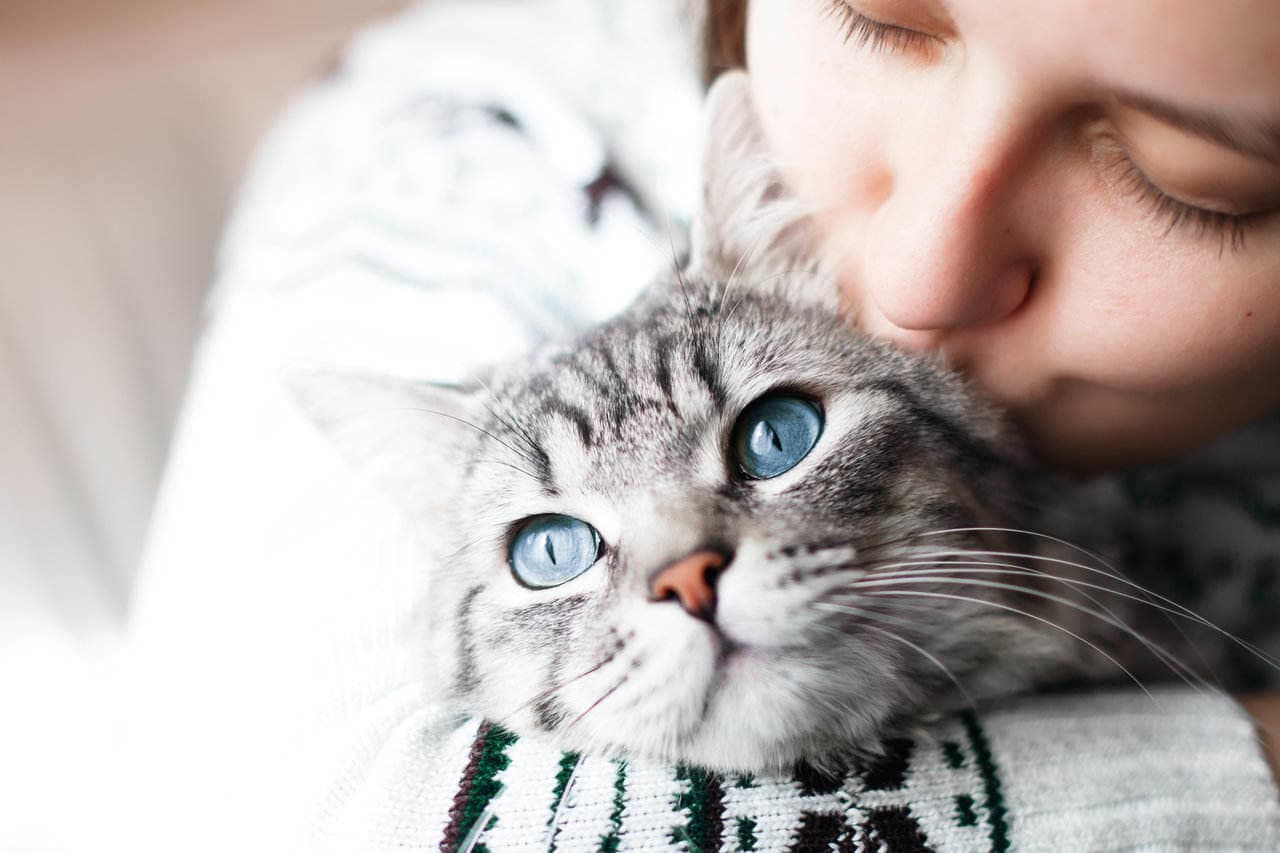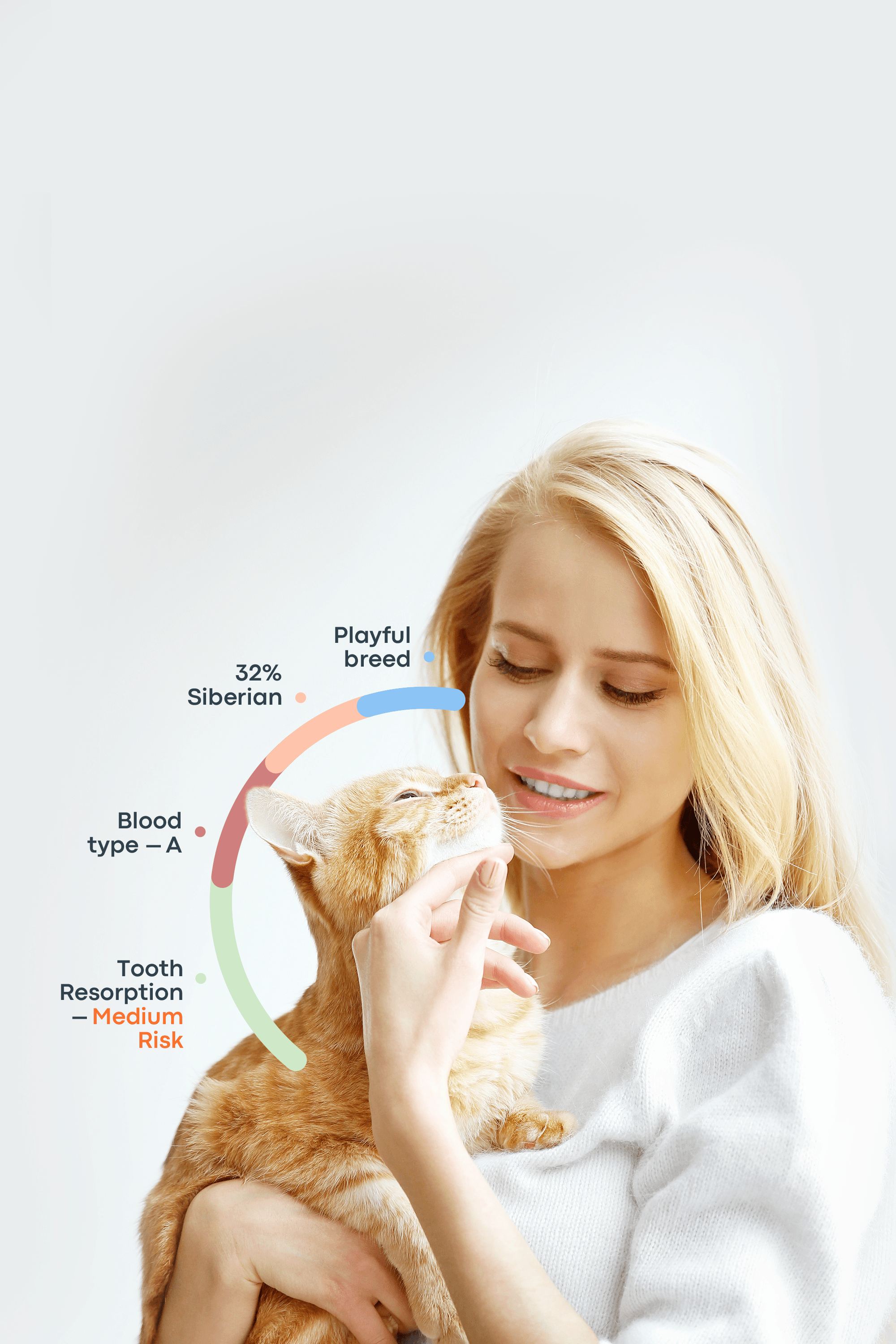Do you ever wonder about your cat’s breed? Is she as cuddly as a Ragdoll, or as large as a Maine Coon? Basepaws now enables you to discover the breed composition and ancestry of your beautiful Domestic Shorthair. To get you started on your discovery journey, here’s what you need to know about cat breeds.
The Domestic history of cat breeds
It turns out that most cat breeds are less than 100 years old – far from ancient royalty. Other than hybrids between house cats and wild cats, all cat breeds have domestic origins. Out of the hundreds of millions of cats on Earth, most of them do not have any purebred ancestors because “purebred cats” are a human invention.
Cat breeds are created when humans take cats with specific traits and choose their breeding partners to create more cats with those same traits. Sometimes the chosen cats are representative of their local domestic population, like the British Shorthair with its short, thick coat adapted to the local climate. Other times the founder cat has a spontaneous genetic mutation, like the hairless mutation in Sphynx or the tailless mutation of Manx. Breeds can also be created by crossing different breeds or even different feline species to create a hybrid.

Cat breeds: The Sphynx cat
Purebreds and Mixes: Cats vs. Dogs
Let’s face it: Cats don’t have much purpose in life other than chasing moving objects, looking marvelous and soaking up love. Most Domestics are capable of that, which is why our human ancestors did not create a large variety of cat breeds. On the other hand, different dogs have been bred to pull sleds, hunt, guard, race, herd animals and many more activities that all require very different body types.
Here are some of the ways that cat breeds differ from dog breeds:
1. Most cat breeds are younger than dog breeds. Although most cat breeds are less than 100 years old, some dog breeds are thousands of years old, and many more trace to the middle ages.
2. Cat and dog breeds were developed for different reasons. People say that dogs are born to serve, while cats are born to be served. Our human ancestors must have felt the same way. Most iconic dog breeds were created with a specific purpose in mind – like pulling a dog sled through snow, or herding sheep through grasslands. On the other hand, what purpose does a Persian or a Siamese have that a Domestic cat doesn’t, other than to be admired?
3. Purebred cats are much less common than purebred dogs. According to the ASPCA, one out of three puppies are adopted from breeders, and up to 25% of shelter dogs are purebreds. On the other hand, less than 3% of cats are purchased from breeders.
4. More dogs have purebred ancestors than cats. Because purebred dogs are popular and have been around for so many centuries, the chances that a shelter puppy has a few purebred ancestors is very high. However, the opposite is true for cats.
Genetic breed tests for your cat
If you own a dog, then you know that a large part of a dog’s identity is its breed. Even if you proudly own a mutt, you probably have guessed at its purebred ancestry. It might have the body shape of a Retriever, the bark of a Chihuahua and the energy of a Border Collie.
Genetic tests have become popular in recent years to provide dog owners with a breakdown of the different breeds that contribute to their dogs’ unique heritage. This is because most mutts contain mixtures of different dog breeds.
Unless you have papers proving your cat’s pedigree, then your cat probably does not have purebred ancestors. However, even if your cat does not have purebred parents, your cat shares more ancestors with some cat breeds than others. Because most cats are not actually “mixes” of different breeds, Basepaws developed a different type of genetic test that will be more useful to all cat owners.
Basepaws Breed report: Finding your cats true breed
If you own a Domestic cat, then you are aware that this breed title does not describe your cat in any way unless you include the word “Shorthair” or “Longhair” or further describe your cat. On the other hand, if you have a purebred, then there are whole books detailing the different qualities of your cat, from the way it looks to the way it behaves. And most importantly, you are aware of some of the health issues it might face later in life.

These purebred cats and Domestics are all descended from the same natural populations of cats from across the world. Although your cat might not have registered purebred ancestors, a purebred could share your cat’s recent ancestors. That is why your Domestic cat might be much more similar to the Maine Coon breed than to the Abyssinian, even if she doesn’t qualify as a purebred.
Basepaws has developed a genetic test that will tell you which cat breeds are most genetically similar to your cat. Your cat might not be a pedigreed Maine Coon, but knowing she is highly related to Maine Coons could help your veterinarian anticipate your cat’s future health needs.
Whether your cat is purebred or Domestic, be proud of her heritage. They all carry the same ancient, royal blood.
Find the complete list of currently included breeds in our Cat DNA test here. We are always looking to add new breeds, and if you have a preference – please get in touch! Much of the Basepaws report is dictated by our community and the more interest in a breed, wildcat, trait or health we have from you, the quicker we can add it to the results for everyone!
*Our test cannot currently be used to register your cat as a purebred. However, if your cat has the trademark characteristics and genetics of the breed, you might refer to your cat as a “mix.”



